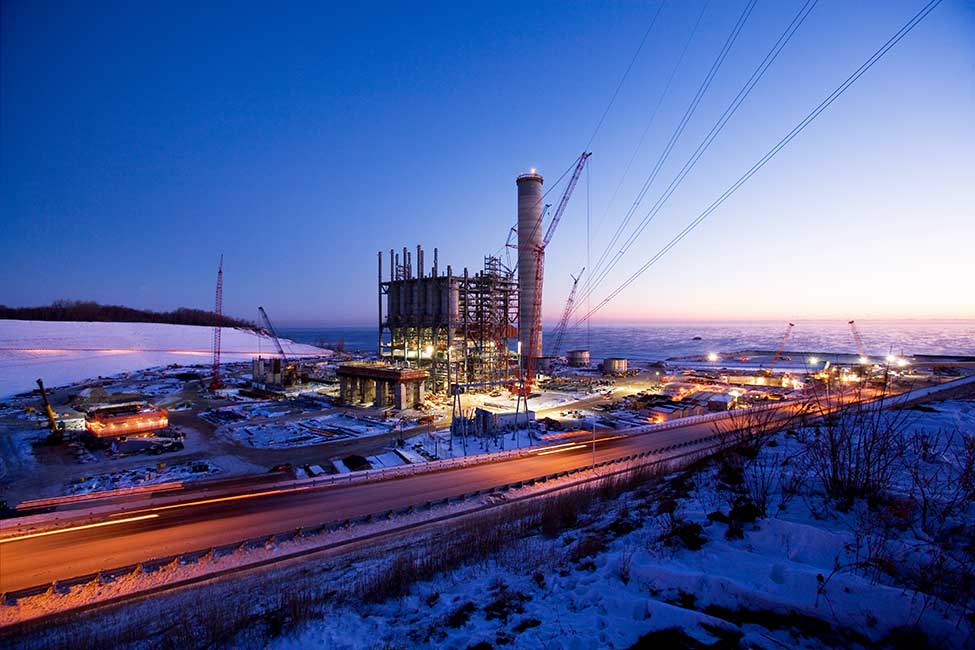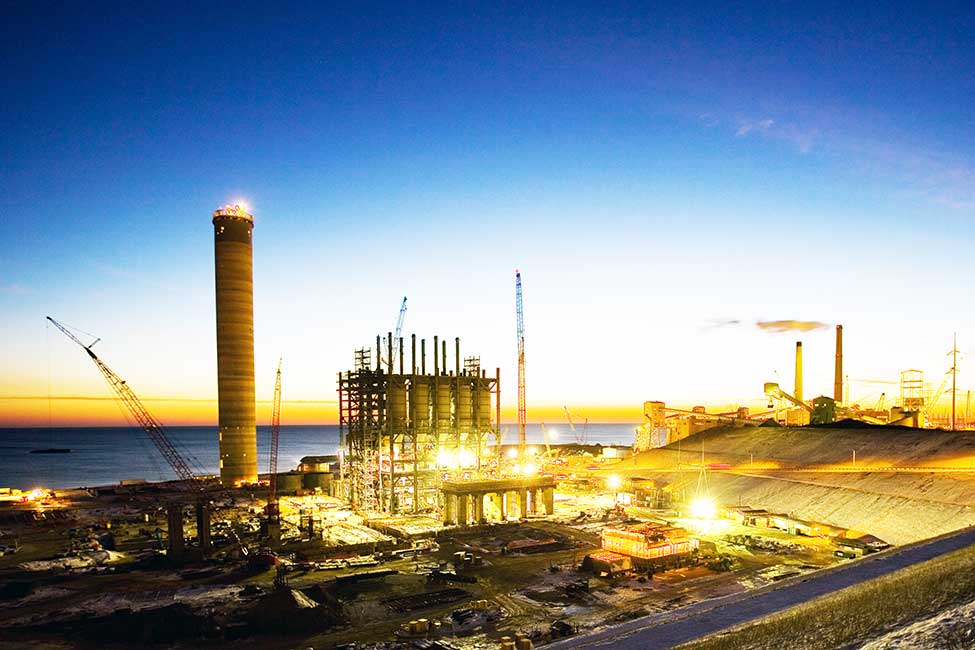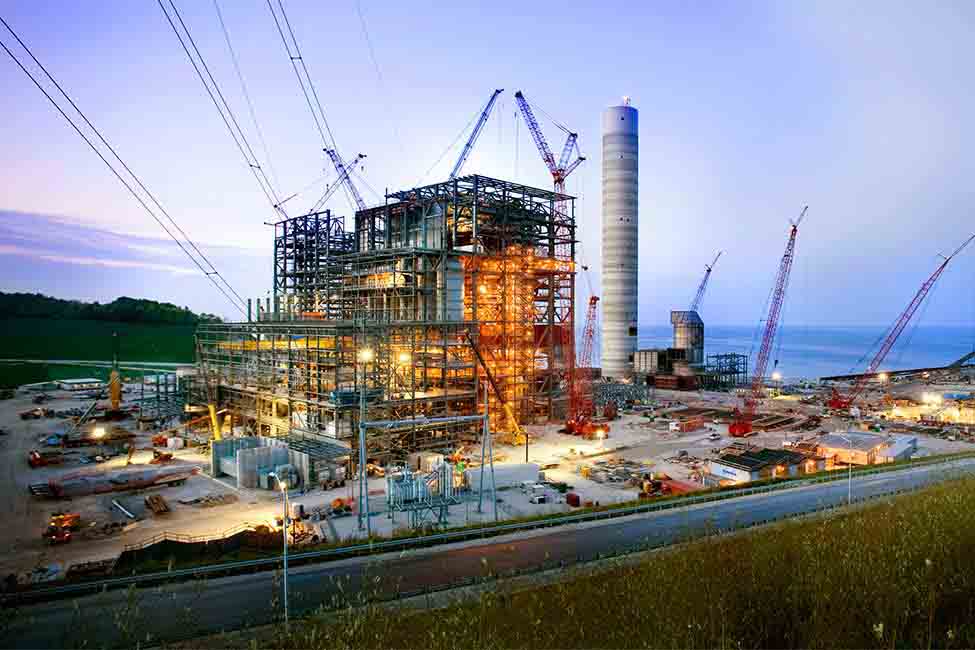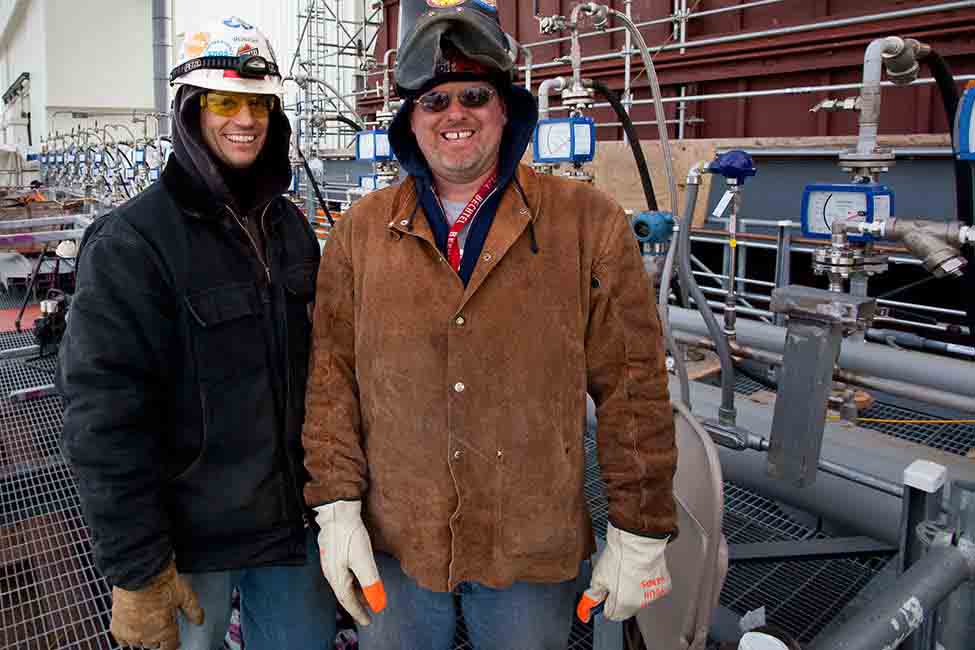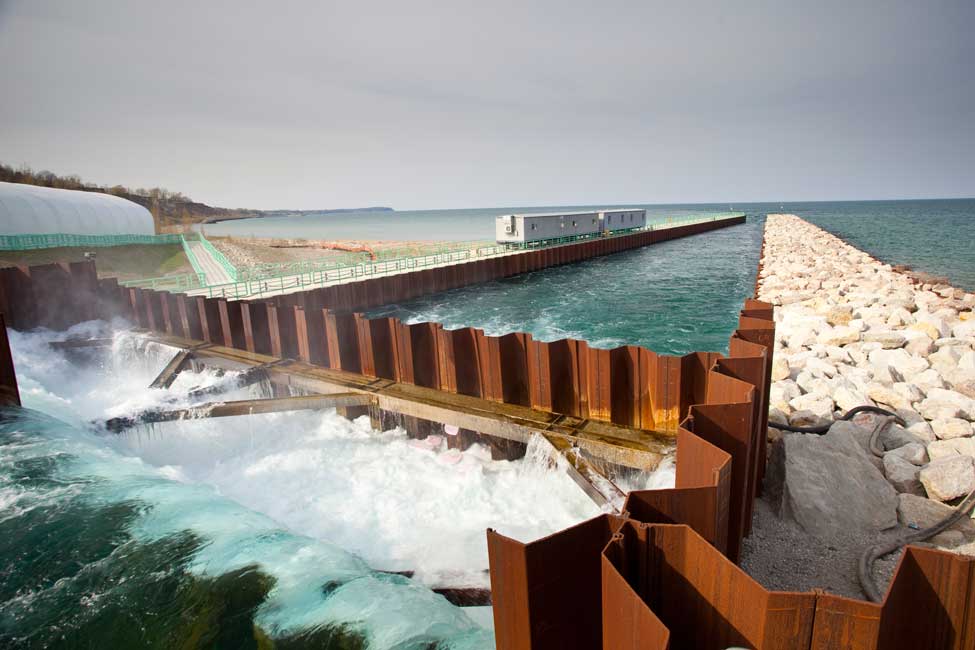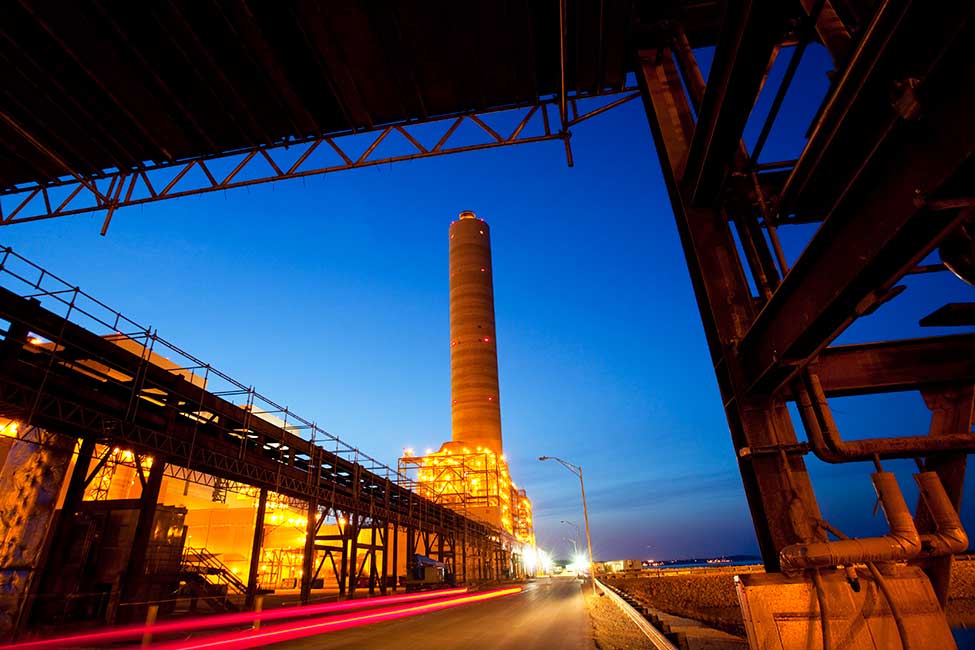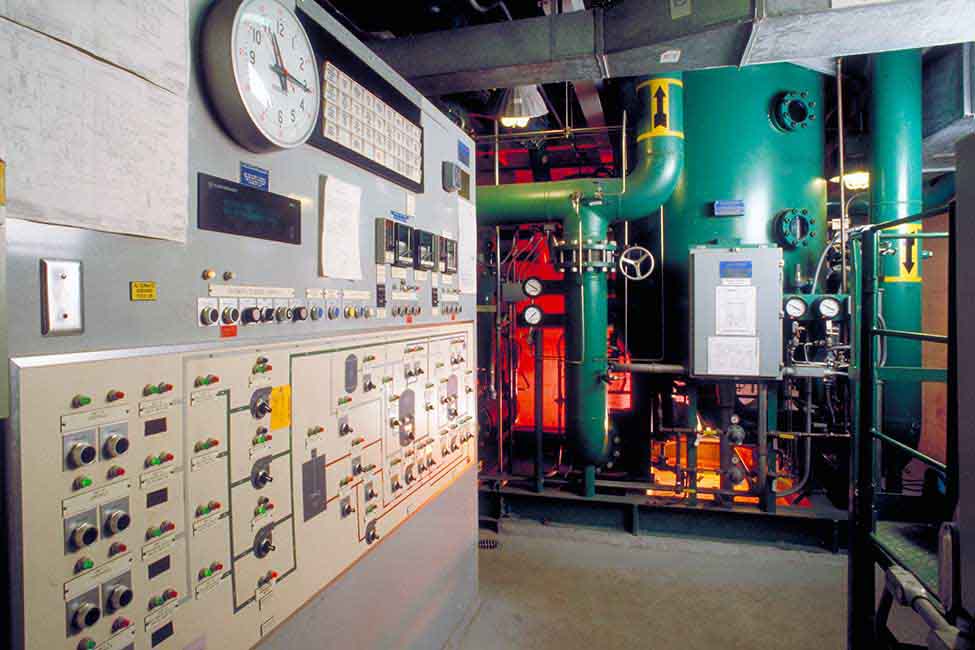Cleaner energy for the Great Lakes region
The two-unit, 1,230-megawatt coal-fired power plant project includes nearly 12 miles (19 kilometers) of railroad, a deep-rock intake tunnel under Lake Michigan, and air and water pollution control systems. With operations marked by high efficiency and low emissions, Oak Creek provides large amounts of cleaner energy for the Great Lakes area.
The expansion plant’s high efficiency stems from the use of supercritical steam-generating technology, which enables the steam generators to operate above the pressure at which there would be a boiling transition between water and steam in a conventional boiler. Instead, as the water absorbs heat at this high pressure, it gradually decreases density forming steam that drives a turbine.
The improved plant efficiency requires less fuel to achieve the electrical output, lowering flue-gas emissions to the air accordingly. Together the higher efficiency and state-of-the-art flue-gas cleaning technology makes this power plant among the cleanest in the country in terms of air emissions.
Digging for new efficiencies
Rather than recirculating water from condensers to a cooling tower and back, which sends heat into the atmosphere, Oak Creek uses a more efficient 'once-through' cooling technology, eliminating cooling towers.
A tunnel 9,200 feet (2,800 meters) long and 28 feet (8.5 meters) in diameter carries water from beyond the littoral zone of Lake Michigan into the plant’s condensers and then back to the lake, taking with it the heat from the turbine exhaust. The groundbreaking intake-and-discharge system is cleaner, more efficient, and less expensive than the cooling towers.
Bechtel recognized for safety and performance
The Specialized Carriers and Rigging Association honored Bechtel with its 2009 Rigging Job of the Year award in the under $150,000 category.
Bechtel Equipment Operations earned the award for safely performing critical lifts to install four 46-foot- (14-meter-) tall water-feed circulation pumps weighing 84,700 pounds (more than 38,400 kilograms) apiece.
Despite unfavorable site conditions and the second-worst winter in Wisconsin history, the Bechtel team developed innovative solutions to overcome complex engineering and to safely and economically install the pumps during a four-month period in 2009.
Oak Creek renovation
The Oak Creek expansion at Elm Road is part of Wisconsin Energy's Power the Future Plan. The plan's overall objective is to reduce emissions system-wide by more than 65 percent while increasing electricity generation by 50 percent.
Highly efficient plants such as Oak Creek, which uses supercritical boilers, reduce emissions of CO2 commensurate with heat rate improvement. The Oak Creek expansion reduced NOx emissions by more than 60 percent, SO2 emissions by approximately 97 percent, and particulate emissions by more than 99.9 percent. Acid mist and other regulated and air emissions were also greatly reduced.



